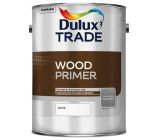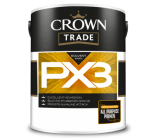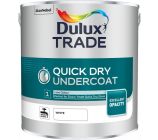
Wood Primer
-

Dulux Trade Wood Primer
From:£26.95(inc VAT)multiple sizes -

Zinsser BIN Aqua
From:£21.95(inc VAT)multiple sizes -

Dulux Trade Quick Dry MDF Primer Undercoat
From:£45.49(inc VAT) -

Crown Trade Acrylic Primer Undercoat
From:£53.49(inc VAT) -

Sandtex 10 Year Primer Undercoat
From:£10.95(inc VAT)multiple sizes -

Crown Trade PX3 All Purpose Primer
From:£15.95(inc VAT)multiple sizes -

Crown Trade PX4 All Purpose Primer
From:£15.49(inc VAT)multiple sizes -

Johnstone's Quick Dry Primer Undercoat (retail)
From:£10.49(inc VAT)multiple sizes -

Johnstone's Exterior Quick Dry Primer Undercoat (Retail)
From:£14.49(inc VAT) -

Dulux Trade Quick Dry Wood Primer Undercoat
From:£22.49(inc VAT)multiple sizes -

Sikkens Cetol BL Primer
From:£41.95(inc VAT) -

Sandtex Trade Flexible Primer Undercoat
From:£17.95(inc VAT)multiple sizes -

Dulux Trade Quick Dry Undercoat
From:£18.49(inc VAT)multiple sizes -

Blackfriar UV Wood Primer
From:£11.49(inc VAT)multiple sizes -

Sikkens Rubbol Primer
From:£22.49(inc VAT)multiple sizes -

Blackfriar Wood Primer
From:£4.95(inc VAT)multiple sizes -

Blackfriar Aluminium Wood Primer
From:£4.95(inc VAT)multiple sizes -

Johnstone's Aluminium Wood Primer
From:£38.49(inc VAT)multiple sizes -

Johnstone's Wood Primer (Oil Based)
From:£30.49(inc VAT)multiple sizes
How many coats of primer on wood?
As a rule of thumb, two coats of wood primer are recommended before painting on unfinished wood. This will help level the wood surface for painting. It is important to note that how many coats you will need will depend on the specific wood primer used. All data sheets with guidance can be found on our individual product pages.
How to remove primer from wood?
Follow the below steps to effectively remove primer from wood:
- Wash the wood that has primer on it with a wood cleaner to remove as much dirt as possible. Dry with a towel once you have cleaned it.
- Use one of our Rodo or Purdy paint scrapers (dependent on the size of the wood) to scrape along the grain of the wood to remove any primer.
- Use an abrasive sanding pad or power sander to sand in the direction of the grain of the wood. This will help remove any remaining wood primer.
- Start on one end of the piece of wood and work your way down. Focus on removing the wood primer from one spot before moving onto the next.
- Clean up any debris with a vacuum cleaner once finished.
Why use primer before painting wood?
Without using primer, painting wood will result in an uneven surface that is prone to peeling and blotches. Wood that has never been primed or painted will be even more bumpy and rough than an unfinished dry wall. Primer should be used before painting wood for the same reason you would prime a wall before painting.
What is the difference between wood primer and undercoat?
Wood primer is used to prime an entirely new surface whereas an undercoat is used before painting a surface that has been painted in the past. For example, you would use a wood primer in a new home but you would opt for an undercoat if you were repainting walls in a rented home. The aim of undercoats are to provide a uniform, smooth surface to be painted on top of. On the other hand, primers are meant to be used on surfaces that have never been painted on before.



















